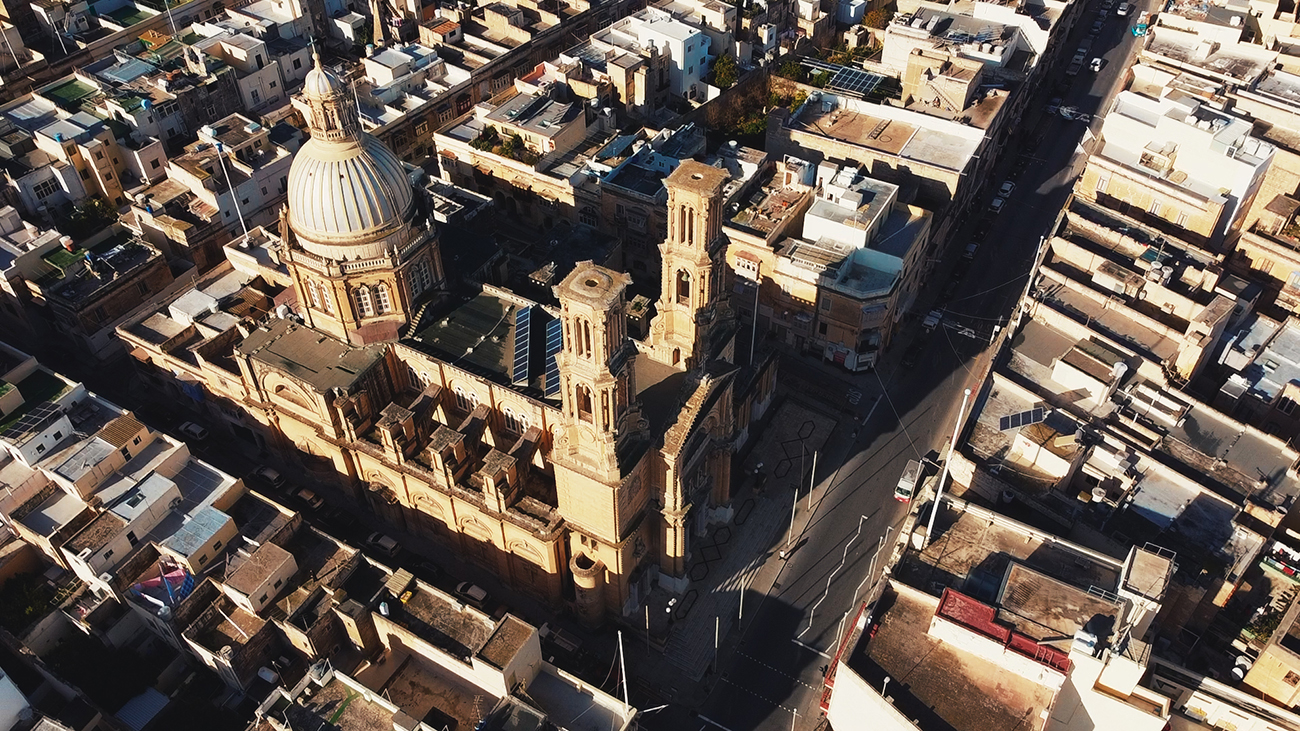Hamrun
Ħamrun is a lively town in Malta with a deep-rooted history, a growing nightlife scene, and an evolving property market. Located just a few kilometers from Valletta, the capital of Malta, Ħamrun has long been recognized for its bustling streets, cultural significance, and community spirit. Over the years, it has transformed into a town that blends traditional Maltese charm with modern urban living, making it an attractive destination for both locals and expats.
History
Ħamrun’s history dates back to the 17th century, but it truly started to flourish during the late 19th and early 20th centuries. The town was initially a rural area, gradually growing due to its strategic location near Valletta and its role as a hub for workers commuting to the capital. As the town developed, it became known for its tight-knit community, with a strong emphasis on family values and religious traditions. The Parish Church of St. Cajetan, established in the 19th century, remains a focal point of the town, serving as both a religious and cultural center.
Throughout the years, Ħamrun has seen significant changes, especially with the advent of modern infrastructure and the steady influx of people moving closer to Malta’s central urban areas. The town today is a reflection of Malta’s rapid development while still maintaining its historical roots.
Nightlife in Hamrun
Historically, Ħamrun was not widely known for its nightlife. However, in recent years, the town has witnessed a transformation, with a growing number of bars, cafes, and entertainment venues springing up to cater to a younger, more diverse crowd. The rise in trendy eateries and modern lounges has turned Ħamrun into a budding nightlife spot, especially for locals who prefer a more relaxed atmosphere compared to the bustling nightlife in St. Julian’s or Paceville.
Many of the establishments in Ħamrun focus on offering a more laid-back, yet vibrant experience. You can find bars serving craft beers, artisanal cocktails, and live music events that attract both residents and visitors. While it doesn’t rival the intensity of Malta’s major nightlife hubs, Ħamrun provides a more intimate and community-focused nightlife scene.
Modern Status of Hamrun
Today, Ħamrun is a busy town filled with shops, restaurants, and other amenities. Its central location makes it a desirable area for those working in Valletta or surrounding areas, with excellent public transport links contributing to its appeal.
The town has managed to modernize while still retaining its unique Maltese character. Its streets are filled with a mix of old traditional townhouses and modern apartments, showcasing the town’s evolution over time. Annual events, such as the Feast of St. Cajetan and various cultural festivals, continue to attract people from all over the island, further cementing Ħamrun’s role as an important cultural hub.
overview
Real Estate in Hamrun
The property market in Ħamrun is experiencing steady growth, with an increasing demand for both residential and commercial properties. The town’s proximity to Valletta and other major business centers makes it a prime location for real estate investment. Over the past few years, there has been a surge in the development of modern apartments, particularly catering to young professionals and expats looking for affordable yet central housing options.
Property prices in Ħamrun are relatively more affordable compared to other central locations in Malta, such as Sliema or Valletta, making it an attractive option for first-time buyers and investors. The town offers a range of property types, from traditional Maltese townhouses with unique architectural features to contemporary apartments with modern amenities.
With continuous investment in infrastructure and a growing interest in urban regeneration projects, Ħamrun is poised to become one of Malta’s key areas for real estate development. Whether for homeownership or rental investment, the town presents numerous opportunities for those looking to invest in Malta’s booming property market.

Living in Hamrun
Throughout the ages, the town of Hamrun has grown from a village to a town which contains many shops, shopping centres, businesses as well as schools and lovely churches. Living in a town such as Hamrun will ensconce you right into the hub of the Maltese way of living – still with its traditions and cultures and unrushed way of life. Whether you are interested in a large old traditional Maltese house or else prefer a modern apartment or penthouse, Hamrun is the ideal place for somebody who is really interested in blending in. Some of the properties on the outskirts of the town have fantastic views reaching as far as the old capital city of Mdina in all its grandeur. Hamrun is bordered by Gwardamangia, Pieta’, Floriana and Valletta on one side and B’Kara, Mosta and Rabat on the other side. An added advantage of buying a property in Hamrun is that the prices there are reasonable and affordable unlike some other towns where the prices of property has risen drastically.
BUY
Properties For Sale in Hamrun
RENT
Properties For Rent in Hamrun
Localities
Discover other Maltese localities
Take a deep dive and browse the Maltese localities and local insights to see if the homes for sale/rent are right for you.